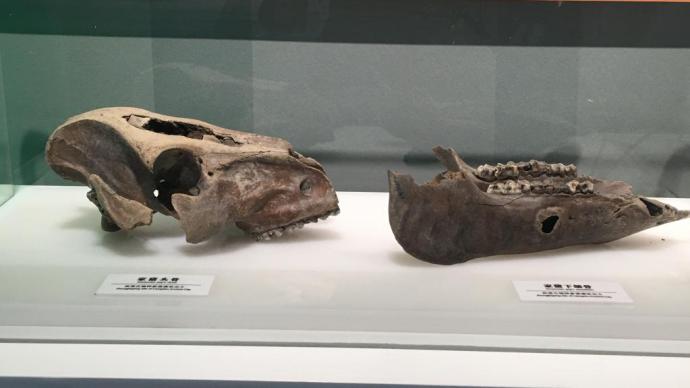
This exhibition focuses on the large number of animal remains unearthed from the Zhongjiagang ancient river site, the bone products unearthed from the Zhongjiagang site, the fauna of Liangzhu culture, how archaeologists identify domestic pigs, and the "preferred" animals by Liangzhu ancestors. Six major aspects including deer animals and animal art of Liangzhu culture. The exhibition will run until December 31st.

exhibition site
"People take food as the sky", the ancient Liangzhu Kingdom 5,000 years ago created a brilliant civilization, and the foundation of this civilization is the developed rice farming. However, the "Liangzhu people" do not only eat rice, they also have delicious meat on their table.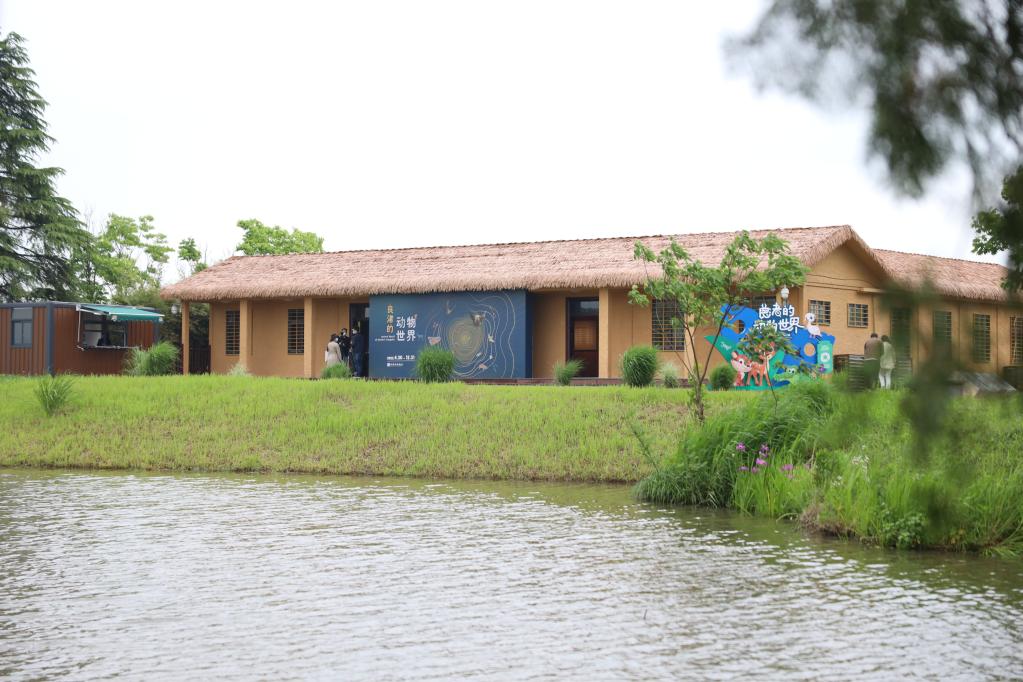
Exterior view of the exhibition hall. Photo courtesy of the Management Committee of the Liangzhu Site Management Area in Hangzhou
"The 'Liangzhu people' should eat the most pork, followed by venison." Song Shu, an animal archaeologist at the Zhejiang Provincial Institute of Cultural Relics and Archaeology, said that among the mammal bones unearthed in the ancient city of Liangzhu, pig bones accounted for about 80% of the total. %, and deer bone accounts for about 10%.More than a dozen skeletal remains of animals such as pigs, sika deer, buffalo and elk during the Liangzhu period were displayed at the exhibition site. They were all unearthed from the Zhongjiagang site. Zhongjiagang is the small river outside the exhibition hall. It is not amazing in appearance, but in Song Shu's eyes, it is a "rich mine" of zooarchaeology of Liangzhu culture.
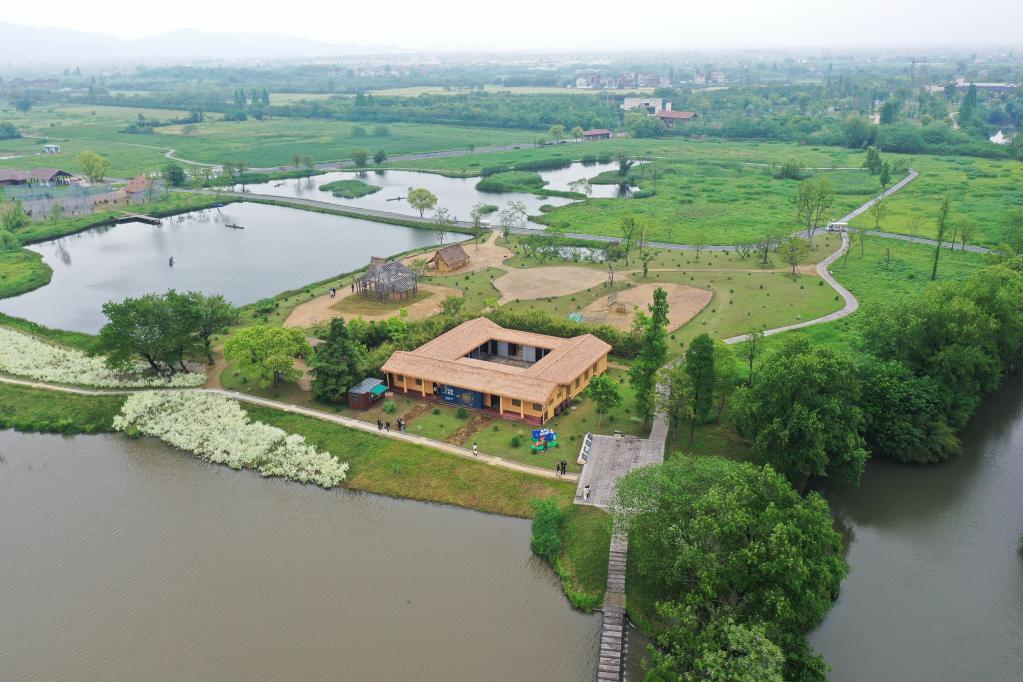
Exterior view of the exhibition hall, below the exhibition hall is Zhongjiagang. Photo courtesy of the Management Committee of the Liangzhu Site Management Area in Hangzhou
"The southern region is humid and hot, and many places have acidic soils that are corrosive. Therefore, it is difficult to preserve animal bones." Song Shu said that nearly a thousand Liangzhu cultural sites have been discovered around the Taihu Lake area, but only the sites where animal remains have been unearthed. There are more than 30 sites, and Zhongjiagang is the only site in Liangzhu Ancient City that preserves animal remains.The reason why Zhongjiagang can preserve animal remains is because of its unique geographical conditions. The ancestors built the ancient city of Liangzhu by stacking piers on the water marsh, and the remaining water surface between the piers gradually formed a river channel, which is how Zhongjiagang was formed. Later, the ancestors directly dumped domestic garbage into the river, and the animal bones sank to the bottom and were preserved in a water-rich anaerobic environment.

Zhongjiagang archaeological site. Photo courtesy of the Management Committee of the Liangzhu Site Management Area in Hangzhou
From 2015 to 2018, the Zhejiang Provincial Institute of Cultural Relics and Archaeology conducted excavation and cleaning of the Zhongjiagang site. Song Shu and others conducted a more detailed panning of the remains cleaned up in 2016, found more than 120,000 animal skeleton remains, and identified more than 40 species of animals.Among these animal skeletal remains, pig bones and deer bones are the most abundant. Song Shu said that the distortion of the dentition was observed on the mandibles of pigs, because after pigs were raised by humans, the mandibles degenerated and became shorter, and the teeth became "crooked". At the same time, she also observed that some pigs have the dental disease of "linear enamel hypoplasia", which is caused by physiological stress in mammals during the growth period, which is also closely related to human intervention.

Pig bones unearthed from the Zhongjiagang site. Photo by Xinhua News Agency reporter Feng Yuan
"Combining various factors, it can be judged that the 'Liangzhu people' were raising domestic pigs at that time." Song Shu said. Domestic pigs become adults at the age of one and a half, and their meat volume and body size will not change much in the future. Therefore, people choose to kill pigs at this time. to 1-2 years old.Apart from domestic pigs, only the skeleton of a domestic animal, a dog, has been unearthed in the ancient city of Liangzhu. Among wild animals, deer skeletons are the most numerous, and skeletons of five species of deer, elk, sambar, sika deer, deer and muntjac, have been found. In addition to eating venison, "Liangzhu people" also like antlers and bones. The deer bone has a thick wall, straight overall, easy to cut, and can be processed into bone products such as bone cones and bone hairpins with a little polishing.
Among the antlers unearthed, some are naturally fallen antlers picked up in spring, with horn rings attached to the ends; some are antlers cut from the head after the hunter killed the deer, with fragments of the frontal bone on it. Antlers can be used as decoration, and the tip of the antler can also be used as a bone cone.
Hunting, slaughtering, eating... these human actions leave different marks on animal bones. At present, researchers have discovered animal remains of 53 species, including mollusks, fish, reptiles, birds and mammals, in various Liangzhu cultural sites. Zoological archaeologists have made a comprehensive study on the utilization of animal resources in the Liangzhu period from the perspectives of the anatomical form, age of death, gender composition, pathological phenomenon, and skeletal traces of the animal remains, and discovered a breeding industry with distinctive regional characteristics in the Liangzhu period. Culture - On the one hand, the ancestors raised domestic animals, and on the other hand, they obtained wild meat through hunting and fishing.
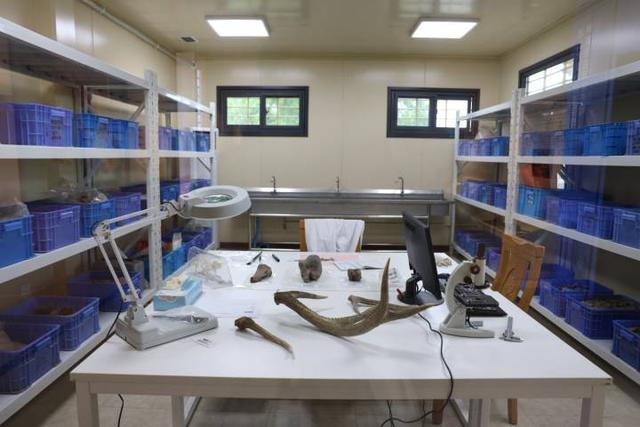
Animal skeletons unearthed in the laboratory
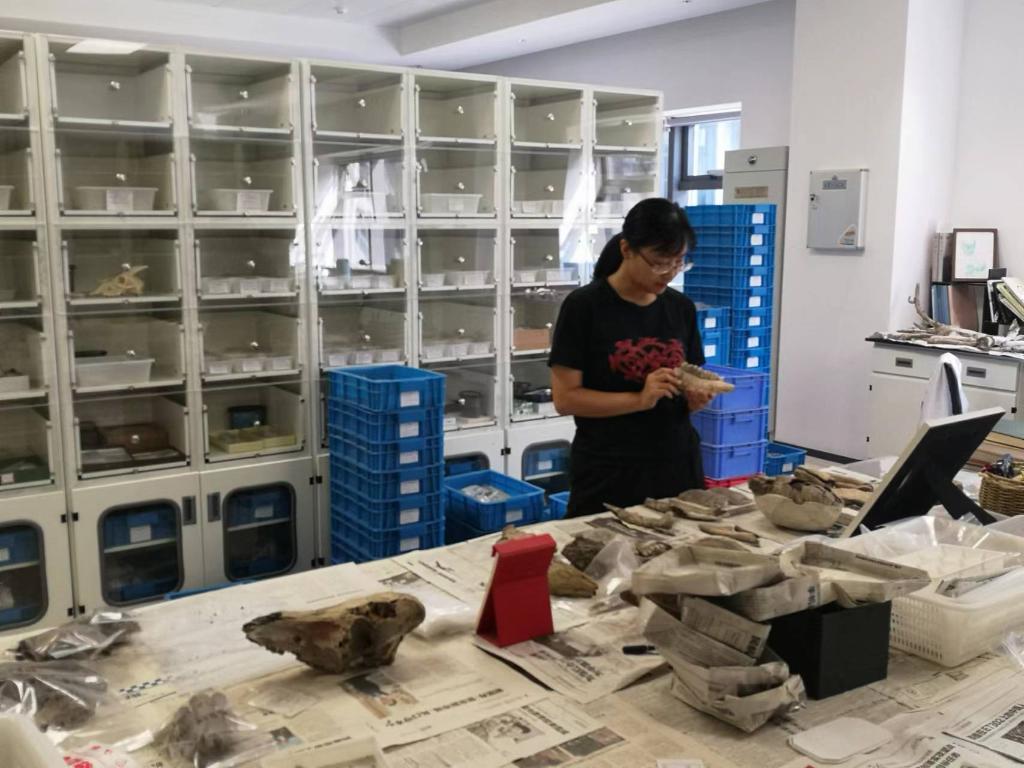
Song Shu researches unearthed animal skeletons in the laboratory. Photo provided by the interviewee himself
"We found tiger bones left after eating, as well as crocodile bone plates, indicating that there were crocodile leather products at that time." Song Shu said that they also found shark teeth, which may have been tribute from other places to the surrounding only fresh water The ancient city of Liangzhu.
In 2019, Liangzhu Ancient City Ruins Park was opened to the public, and a deer garden was specially set up in the park. Photo courtesy of the Management Committee of the Liangzhu Site Management Area in Hangzhou
The ancient city of Liangzhu is located on the alluvial plain between the two remaining veins of Tianmu Mountain. The climate at that time was warmer and humid, similar to the current South China region. The rich animal resources also supported the prosperity of Liangzhu civilization. Song Shu said that zooarchaeology helps to better study the lives of local people.(The picture and text of this article are transferred from Xinhuanet)